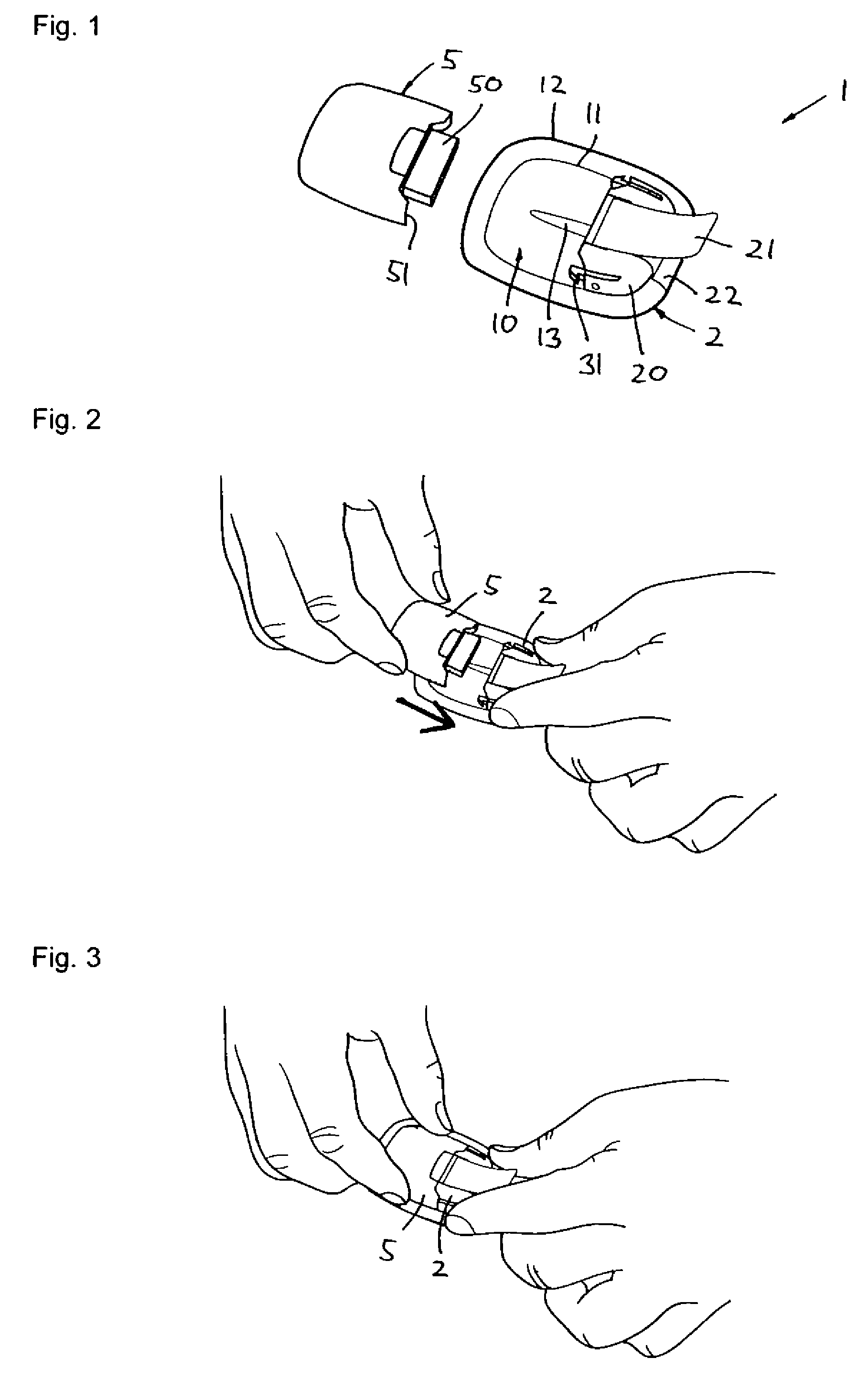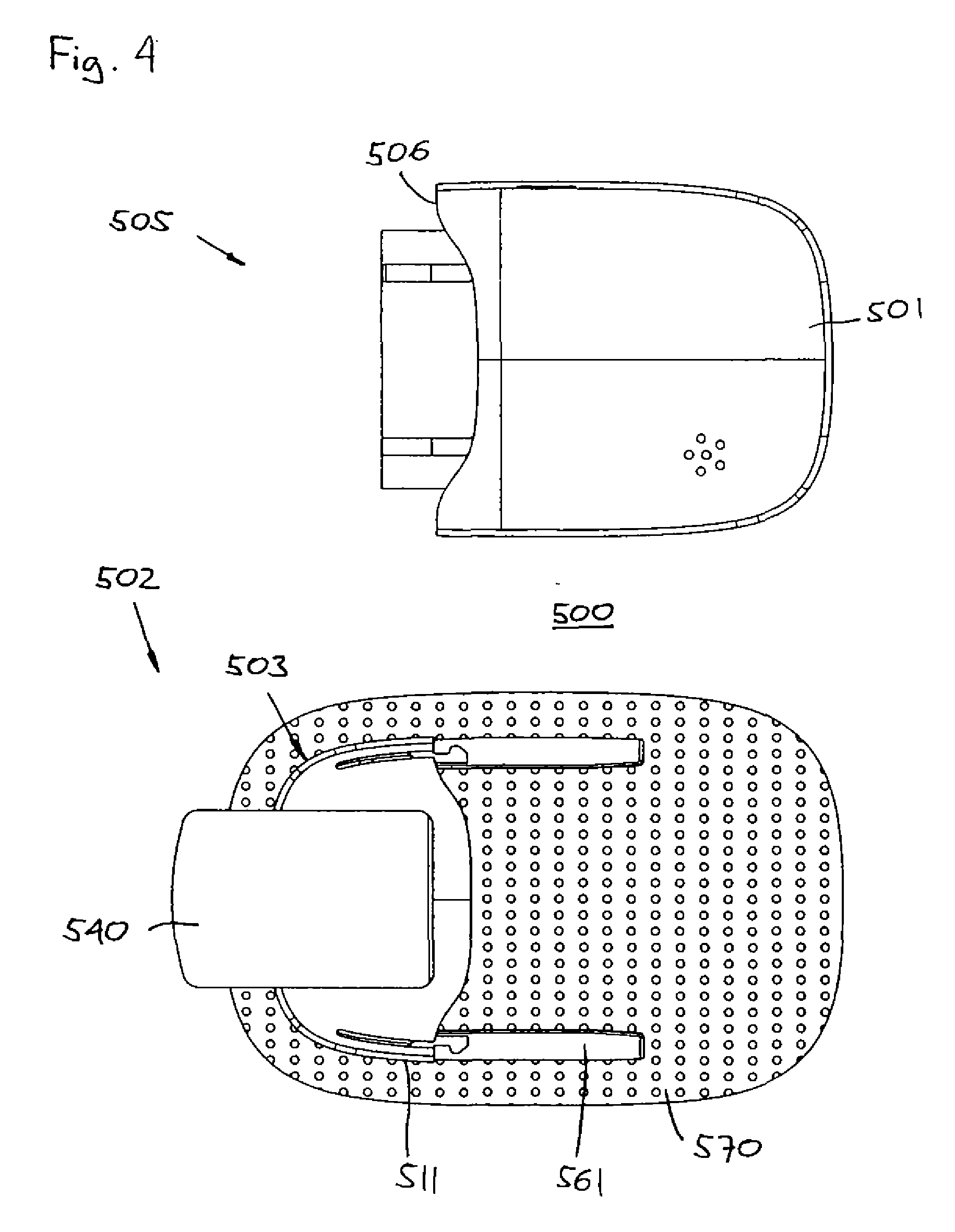[0009]Having regard to the above-identified problems, it is an object of the present invention to provide a skin mountable
medical device or
system as well as components therefore, which allow such a device or
system to be used in a convenient and cost-effective manner, yet allowing safe and reliable treatment of a medical condition.
[0014]Corresponding to a first aspect, the needle is arranged within the cannula such that in the fourth state the distal end of the needle can be positioned within the cannula short of the distal opening. The above arrangement allows the upper leathery layer of the skin to be penetrated with the insertion needle projecting from the cannula. Thereafter the distal ends of the cannula and the needle “shift positions”, e.g. the needle stops and the cannula continues the insertion until the distal end is a
short distance in front of the needle end, e.g. 1-5 mm. After this the cannula and the needle together continue the insertion through the relatively soft
subcutaneous tissue, the needle providing directional guidance as well as support against kinking, until the cannula is fully inserted. As appears, the combined cannula and needle
assembly has a blunt tip when penetrating the sub-
cutis thereby causing reduced damage to the
subcutaneous tissue. Compared with traditional infusion sets in which the needle penetrates the
dermis as well as sub-
cutis, less damage can be expected. Once the cannula is fully inserted, the needle is retracted.
[0015]To provide the relative motions between the cannula, the needle and the housing, an exemplary embodiment comprises an inserter
assembly for moving the cannula and the insertion needle between the different states as defined above. The inserter
assembly comprises the cannula, an inserter for moving the cannula, the needle, and a
needle holder attached to the needle. The inserter assembly has (a) an initial state in which the
needle holder is locked to the inserter in an initial position with the distal end of the needle projecting from the distal opening of the cannula, (b) an
intermediate state in which the
needle holder is locked to the inserter in an intermediate position with the distal end of the needle positioned within the cannula short of the distal opening, and optionally (c) a retracted state in which the needle is retracted from the portion of the cannula extending from the housing. This arrangement allows the inserter to function as the primary vehicle for moving the cannula and the needle, the “shift” between the initial and the
intermediate state allowing the relative movement between the cannula and needle after the initial insertion through the outer layer of the skin.
[0017]To prevent displacement of the inserted cannula, the fully extended cannula may be locked in place relative to the housing. For example, in case the inserter is left in place and only the needle is withdrawn, locking means (e.g. barbs or hooks) may be provided between the housing and the inserter. Alternatively, the cannula may be attached to a cannula which can be moved by the inserter from a retracted to a fully extended position, the cannula holder and the housing comprising cooperating fastening means for locking the cannula in its extended position, this allowing the inserter to be withdrawn after insertion.
[0020]The
medical device may be provided with a flexible sheet member with a lower surface adapted to be arranged on a
skin surface of a subject (e.g. comprising an
adhesive), and an upper surface to which the first housing portion is arranged. In this way the cannula can be securely held in place after insertion.
[0032]To reduce the likelihood of transcutaneous device injuries, the distal end of the transcutaneous device may be moveable between the extended position in which the end projects relative to the mounting surface, and a retracted position in which the end is retracted relative to the mounting surface.
 Login to View More
Login to View More  Login to View More
Login to View More 


